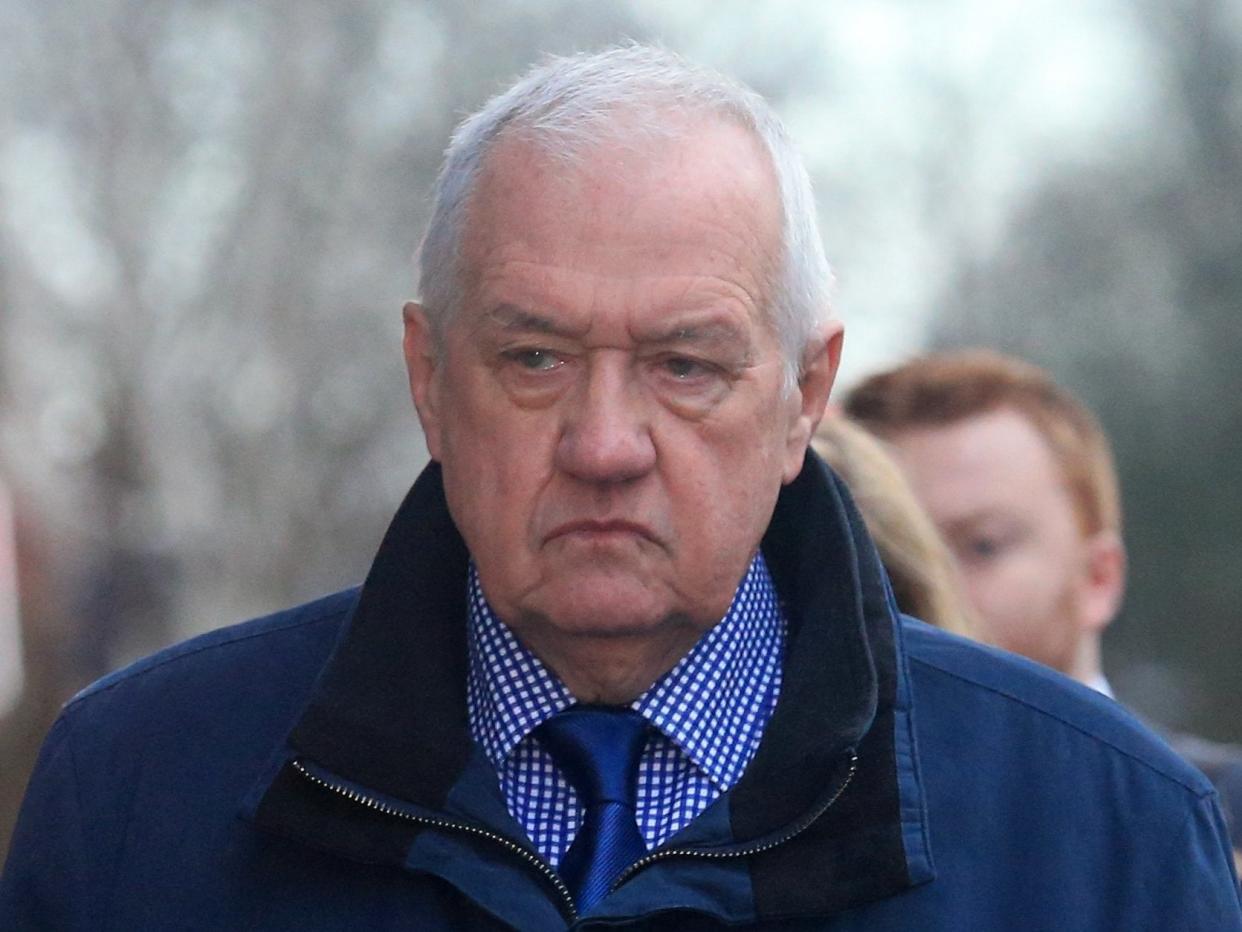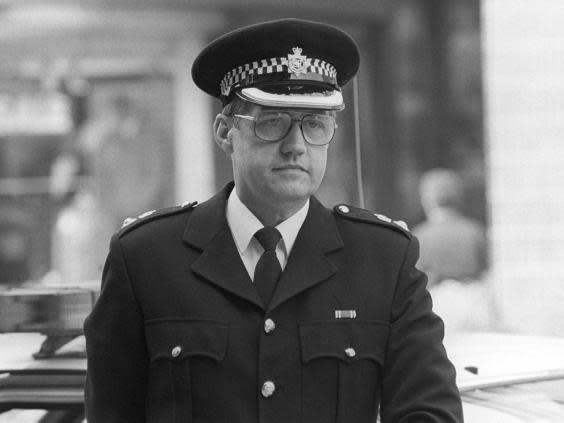Hillsborough trial: How the prosecution case against David Duckenfield fell apart

The acquittal of Hillsborough match commander David Duckenfield has caused shock and anger after a 30-year campaign for criminal accountability for the disaster.
A jury found the former South Yorkshire Police chief superintendent not guilty of the gross negligence manslaughter of 95 victims.
Prosecutors had argued that his “extraordinarily bad” failings as head of the police operation at the FA Cup semi-final between Liverpool and Nottingham Forest had led to the disaster on 15 April 1989.
Richard Matthews QC said Mr Duckenfield failed to prevent the risk of crushing and then failed to take action as the disaster was unfolding, with survivors and witnesses recalling how they shouted at police officers for help, and to be let out, but got no response.
“The people who attended the match, and all of them, were entitled to have placed their trust and their personal safety in the hands of the man who should have been in a position to keep them safe,” he added.
“You didn’t need hindsight, all you needed was to have prepared properly.”
The jury that first considered the case at a 10-week trial which started in January failed to reach verdicts on Mr Duckenfield, and his retrial started in October.
It heard that he had been appointed to his role less than three weeks before the disaster, and Hillsborough stadium had already been made unsafe by structural engineers who overestimated the capacity of fenced pens where 96 Liverpool fans would be killed.
The jury was told how unclear ticket markings, poor signage put up by Sheffield Wednesday, the way fans arrived and the decisions of police officers at the Leppings Lane entrance to the ground all contributed to the fatal crush.
They heard that Mr Duckenfield relied on the experience of late superintendent Bernard Murray, who was had also failed to foresee the danger as his deputy and ground commander on the day.
Much of the evidence relied upon by prosecutors was read from statements given to the previous Hillsborough inquests, and some witnesses were unfit to appear in person or had died.
Others struggled to remember details under cross-examination and contradicted their previous witness statements.
Mr Duckenfield’s defence lawyer claimed he had been “unfairly singled out” and was being held to different standards from other police officers and officials.
“Whilst heartfelt sympathy for those who suffered is natural, it is human, it must never be a reason to convict someone for events beyond his control or responsibility,” Benjamin Myers QC told the jury.

“It is blatantly unfair to blame one person when so many other people and so many other factors contributed to this tragedy.”
Mr Duckenfield did not give evidence at either trial, sitting silently in court through months of evidence, and proceedings were delayed for a day in October as the 75-year-old received hospital treatment.
Mr Myers said his client believed he was not negligent and “did his best”, and that factors including “bad planning, crowd behaviour, police behaviour, mistakes by individuals and genuine human error” contributed to the disaster.
The lawyer told Preston Crown Court that the match commander “being placed in a position of ultimate blame, not just his part but for the shortcomings and failures of others, factors beyond his control and even knowledge, and that is deeply and bitterly unfair”.
Mr Duckenfield showed no emotion as harrowing evidence was read in both trials, but the second jury was told not to draw any adverse inference from his lack of reaction.
Judge Sir Peter Openshaw said: “It is recognised that as a sufferer of post-traumatic stress disorder, his appearance and demeanour in court should not be taken as an indication of his state of mind.”
The court heard that the crush happened because Mr Duckenfield ordered the opening of a large exit gate at the Leppings Lane turnstiles, letting more than 2,000 Liverpool fans flood into the stadium and down a central tunnel into overcrowded pens three and four.
But he had been begged to open the gate by police officers at the entrance to the ground, who feared people would die in a separate crush outside the turnstiles, and did not predict that easing that potential disaster would cause another.
Edward Higgins, a sergeant who had been duty on the Leppings Lane turnstiles, said fans complained of being crushed outside as they entered the ground.
“They were carrying the youngsters over the top [of the turnstiles] to get them in quickly and safely,” he recalled.
“There was a lady in a red dress that was complaining that somebody would get killed outside.They were getting crushed.”
Former police officer Robert McRobbie, who was in the police control box with Mr Duckenfield, told the court he remembered hearing three radio requests from Supt Roger Marshall.
Describing the final request for the Leppings Lane gates to be opened, he said: “It was more of a demand than a request. It was more frantic. It must have incorporated the words ‘people were going to be hurt if the gates weren’t opened’.”
He described Mr Duckenfield as “deep in thought” before giving the order, and did not recall any advice being given by other officers in the box.
Mr McRobbie said: “Basically, it was if there was going to be loss of life or people injured outside he had no option but to give the authority to open the gates.”
The court heard that the capacity of the terrace where the crush unfolded was overestimated by more than 1,700.
Chartered engineer John Cutlack estimated the capacity of the two central pens as 678 and 778, but the jury was told the club figures for the pens were 1,200 and 1,000.
Defending Mr Duckenfield, Mr Myers compared his promotion to match commander as “giving a captain a ship that is already sinking”.
“He didn’t breach his duty, he did what he was expected to do in difficult circumstances,” he added, calling the pens “death traps”.
“Nobody foresaw a press forward relentlessly into the tunnel in the way that happened,” Mr Myers said.
“The threat of hooliganism and crowd disorder and violence cast a huge shadow over the way football was policed.”
At the 2015 inquests into the victims’ deaths, Mr Duckenfield admitted he had “limited knowledge” of the role as match commander and added: “Probably I wasn’t the best man for the job on the day.”
The jury also heard evidence from the Taylor Inquiry, held immediately after the 1989 disaster, that had had misled the Football Association by claiming that exit gate C had been “forced”.
When Mr Duckenfield was interviewed by police under caution in 2017, he gave a prepared statement saying that he had “tried to do my professional best”.
He said that documentaries and commentaries on the disaster had made it difficult to know whether he was independently remembering the events of the day.
Mr Duckenfield said: “To have been a part of the catastrophe as it unfolded was also distressing and deeply harrowing for me.
“It led to me receiving medical support and, in the early years, to me drinking in excess by way of self-medication.”
As they prepared to consider their verdicts, jurors were told to be “cold, calm and dispassionate”.
Sir Peter said the 30-year delay before the trial “placed the defendant at a serious disadvantage in challenging allegations”.
“The deaths of 96 spectators, many of whom were very young, is, of course, a profound human tragedy attended by much anguish and anger which for many has not passed with time,” he added.
“But, as both counsel have advised you and I will now direct you, as you go about your duty you must put aside your emotions and sympathies, either for the bereaved families or indeed for Mr Duckenfield, and decide the case with a cold, calm and dispassionate review of the evidence that you have heard in court.”
For an English jury to convict, they must be sure a person’s guilt is proven beyond reasonable doubt.
Following Mr Duckenfield’s acquittal, the police officer who led the investigation said the 30-year delay between the disaster and trial had hampered their efforts.
Assistant Commissioner Rob Beckley said the jury “had a difficult and challenging task examining evidence going back decades”.
“The passage of 30 years has presented challenges for everyone involved in the legal process, prosecution and defence,” he added. “Thirty years means evidence has been corroded and some people and organisations cannot answer for their actions because they are no longer with us.
“Thirty years means myths took root about fans being a cause of the disaster, now unequivocally shown by both defence and prosecution evidence to be wrong. And 30 years means many people, especially families, have had to constantly relive their terrible experience.
“When all Hillsborough legal proceedings are concluded we should, as a society, take time to consider these matters and learn lessons. For the sake of the 96 innocent people who died 30 years ago, something like this should never happen again.”
Read more
Harrowing Hillsborough testimony from survivors and victims’ families
David Duckenfield found not guilty over Hillsborough disaster
Failings by David Duckenfield led to Hillsborough disaster, court told
Hillsborough match commander David Duckenfield to be retried

